How To Help Your New Dog Adjust After Adoption is a common question I see online. Adopting a new pet is easy. Having them adjust to the new environment can be challenging.

*Disclosure: I only recommend products I would use myself and all opinions expressed here are our own. This post may contain affiliate links that at no additional cost to you, I may earn a small commission. Read full privacy policy here.“
Table of Contents
Prepare For Your New Dog’s Arrival
Through experience in the adoption of many different dogs over the years. We tend to adopt those that are normally overlooked in the shelters. Sometimes they are referred to as “Broken Dogs”. For instance, we adopted a beagle cross with separation anxiety another with severe fear aggression. From Puppies to Seniors. Regardless, knowing the character of the dog will help you prepare for the first week of being in a new home. Observe your new dog’s body language each step of the way!


Supplies you will need
- Dishes – One bowl for water and one for Food
- Leash or harness, collar, seatbelt, and ID tags
- The brand of food they have been eating, you can change this once you have the dog established with your veterinarian. Giving them a new food can result in diarrhea, bloating, and other issues. I always suggest weening them slowly onto any new foods.
- Limit your treats and human foods. You should always consult a professional. Some dogs can develop allergies very fast. And you may want to save those treats for training.
- Clicker for Training
- Dog Bed and some toys or even some soft cuddly blankets
- Crate if your dog is used to crate training. If not you may want to research the topic further before using the crate training. We had some dogs that loved the crate, others that did not. Give them a choice if you’re not sure.
- Pet Insurance, is usually offered free with the adoption of a pet from a Humane Society or Rescue organization. If not, check out what is available with your vet on the first visit.
- A fenced area or purchase a baby gate so they can not bolt out of the door on their own at first.
- Don’t leave your new friend chained up or alone. You need to have this bonding time with them.

Give your new dog plenty of space

Try picking your new dog or puppy up on a weekend in your work during the week. This gives you more time to start to bond with them. I find throughout the years by taking them for a walk before going into the home can really help them. Let them sniff the area and get to know where they will need to do all their elimination.
Some dogs may want to have some alone time or go lie in a different room. This is absolutely normal. Especially in the first few days.
You may feel like they don’t want to be around you. That is not the message they are sending you. They need to decompress and have some quiet time. You can set up a quiet area on-site with a crate even, but be sure to leave the door open. Let them be but reassure them it’s ok to come in where you are anytime.
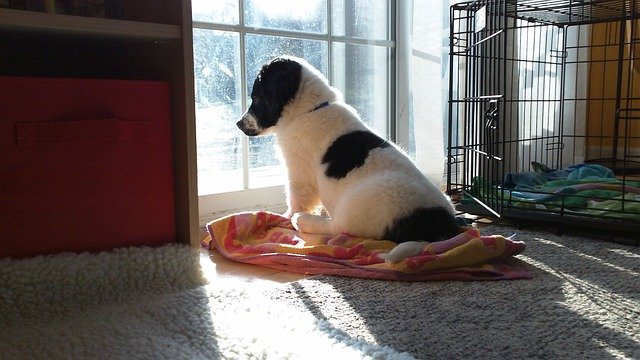
Making your new furry friend comfortable
Make sure you keep a good eye on them and not leave them alone. Take them with you if you can. Get them used to being around you and your routine. Some of the dogs we have adopted never seen a child, or a bike even the inside of a house before. Help them adjust by welcoming them and showing them your boundaries with a gentle yes and no. Never yell at your new dog. Always talk in a calm and loving voice. Remember you are building trust with your new friend. Not trying to scare them.
If they start chewing on things or jumping on other people you need to distract and correct them. I have some great training posts to help you with teaching your dog the basics of training. You may also find some common behavioral issues that are very easy to correct if you start right away.
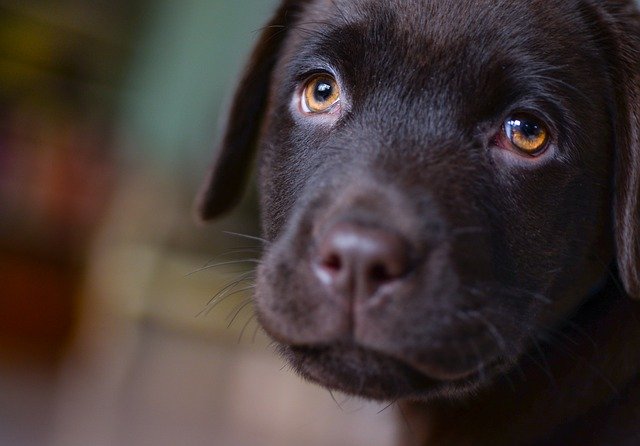
How To Help Your New Dog Adjust After Adoption with a Firm Routine
I know including myself sometimes we can look into those big amazing eyes and give in by humanizing our new friend. They need routine and boundaries to follow. So if you don’t plan on them being on the furniture, do not allow them just because you feel sorry for them in the moment.
Consistency
You must be consistent. If you do not want them to beg at the table. Feed them in a different room and put a gate up to block them from the area you are eating from until they understand that is not what you want. Do not scold them, show them with love and patience. They need you to show them. They will start to trust you. It helps them build confidence to make the right choices on their own without direction eventually.
Training
I always highly recommend clicker training and try to teach your new dog one new thing a day! It not only tuckers them out but it helps them build confidence. Practice the “Focus” command first. Once your dog is fully focused on you, you can start teaching them the basics. Some dogs take no time to learn, others may take longer. For those that have no experience training I highly recommend a dog trainer. We had to hire one for our most recent rescue. It only takes a few sessions and you will be well on your way! Make sure the trainer has good references and uses positive reinforcement.
Another great command you need to research is “Leave it” This could save their life. Especially on a walk, you do not want them to eat anything from the ground while you are out walking them. Even if it is harmless. You should always be able to tell your dog to leave it! It could be a matter of life and death in some circumstances.
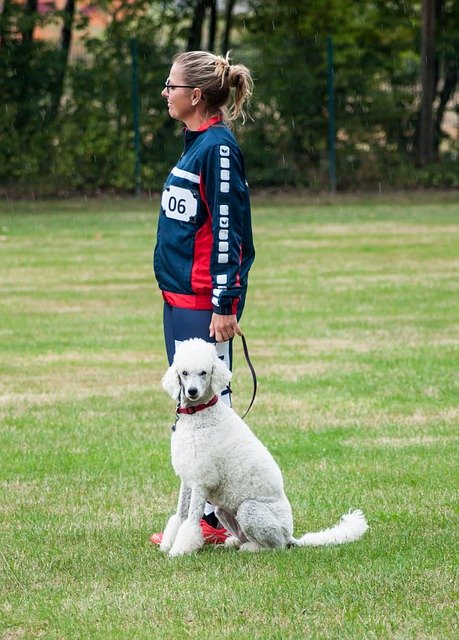
Feeding Schedule
Feed your new pup twice a day. Be consistent and make sure they have access to lots of fresh drinking water all day. If your working and need to leave the home I would recommend a Pet Water Fountain. You can read our review on our PetSafe Canada. They even have automatic feeders you can operate right from your cell phone. Regardless your dog should have a daily routine they can count on. It provides security and trust towards you.
How To Help Your New Dog Adjust After Adoption with Bonding
Here are some tips on building trust and a strong bond with your furry new friend. Remember a dog is in our world for a short period of time, but to them, you are their whole world. So practice, patience, and consistency is the key!
- Do not yell at your dog they will not come when called because like she said in the video, who wants to be around a grumpy human right?
- Play and exercise with them as much as you can
- Teach and train your dog regularly. No dog is too old for some good ole clicker training! Our pup was 9 months old already and we still were able to train her very fast. She was very eager to please, food motivated, and a fast learner.
- Use some puzzle toys if you are too busy to play with them.
- Make sure you make a big deal out of the successes when they achieve the behavior you looking for.
- Know their body language and practice showing them your body language and what it means.
- Always use Positive Reinforcement training. It really does work. We have seen the hardest dogs to train respond well with clicker training. Eventually, you can replace the clicker with commands.



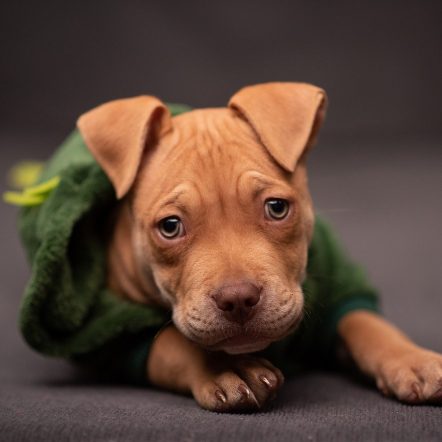



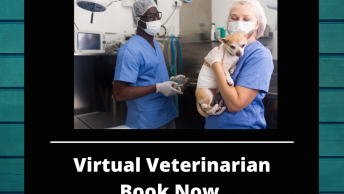


Your post is a must read for everyone who buys or adopts a dog. This is such a complete guide on how to prepare for your dog and how to handle your new companion. Oh, and I love the doggie language poster 🙂
Thank you so much for the kind words Dorit, I am so happy you liked the doggie language poster. I hung this up on my bulletin for months while we trained our new pup. 🙂
Aw, all of these are such great tips. I’m pinning this, because I’m hoping to have my own little bundle of fur joy next year! Thank you for this post and all the cute pictures!!!
Thank you so much, Iris! I am so glad you enjoyed the post and I am so excited you may be getting your own bundle of joy next year!
As a huge dog lover, this was a great article. “Almost” makes me want to get another puppy. But for now, I’m nuts over my Labradoodle Moose – who probably needs a wee bit more training.
Thank you, Diane, I am glad you enjoyed the post. Haha Almost! I can relate, after I wrote the post I was actually contemplating doing it all over again myself. 🙂
This is a great post, so many people do not think about the empications that go into adoption of a pet especially the older ones and how to transition them properly.
Thank you, Jen! I agree sometimes transitioning can be difficult, sometimes they just need to decompress especially senior dogs. 🙂
Oh this came so in handy! My husband and I are looking to adopt a dog so I will remember these when we finally do!
I am so glad you found this handy! Early congrats on adding in a new addition to your family in the future. And thanks so much for stopping by 🙂